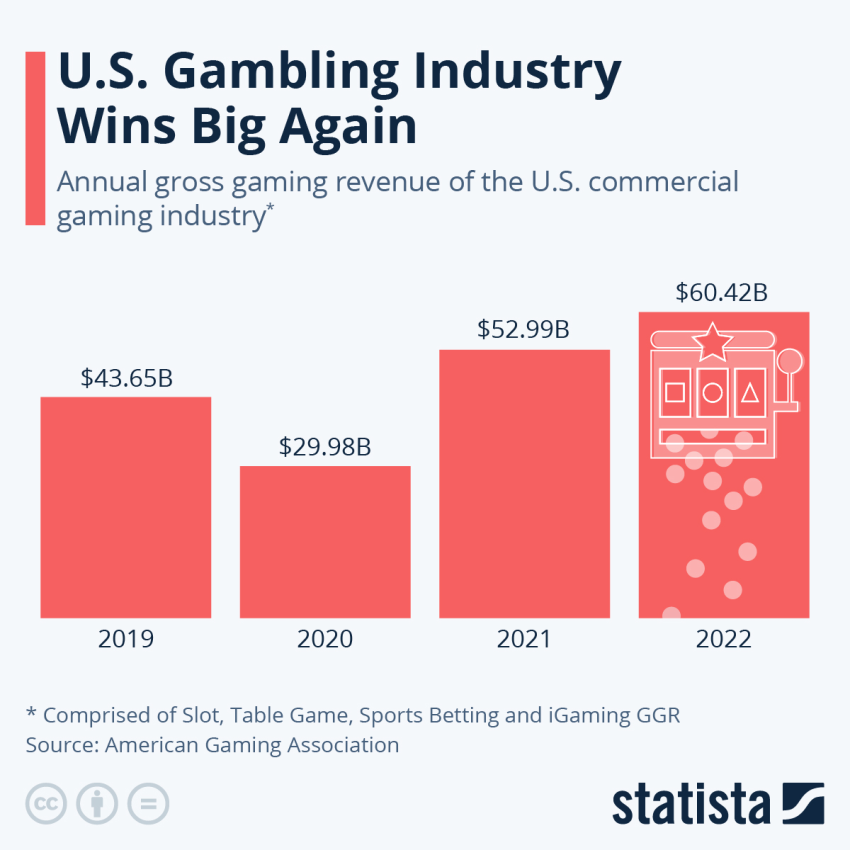Gambling statistics reveal fascinating insights into a world often clouded by myths and misconceptions. As the gambling industry continues to expand, showcasing growth in online sports betting and casino games, it’s essential to peel back the layers of misinformation. Did you know that approximately 34% of U.S. adults engage in gambling activities every year? From gambling facts that highlight participation rates to the sobering reality of gambling addiction, these statistics help illuminate both the enjoyment and risks associated with this pastime. This piece will explore common beliefs and the underlying data that challenge or confirm our understanding of gambling as a whole.
When we talk about wagering activities, numerous aspects come into focus, including gaming patterns, behavioral trends, and the effects of gambling on various demographics. With terms like gaming statistics and betting behavior gaining traction, it’s clear that the conversation about gambling encompasses more than just numbers. Engaging with casino data and exploring the realm of online wagering can shed light on societal impacts, addiction phenomena, and the evolving landscape in gaming preferences. As we traverse this narrative, we will confront gambling myths and truths shaped by empirical evidence, ultimately seeking to clarify the broader picture of risk and reward associated with these activities.
Understanding Gambling Statistics: Facts Behind the Myths
When delving into the world of gambling, statistics serve as a crucial tool for separating facts from prevalent myths. One major myth is that gambling is an exclusive activity, predominantly favored by wealthy individuals. In reality, gambling statistics highlight that a diverse demographic engages in various forms of gambling, whether through online platforms or local casinos. This inclusivity dispels the notion that gambling is limited to a wealthy elite, demonstrating its mass appeal across different socioeconomic backgrounds.
Additionally, the overwhelming belief that all gamblers face addiction is another misconception unsupported by gambling statistics. Approximately 85% of individuals who gamble do so responsibly, viewing it as a form of leisure and enjoyment. Recognizing this distinction is vital for both consumers and policymakers as they navigate the complexities of the gambling landscape. By informing the public about these gambling facts, we can better address the stigma surrounding responsible gambling behavior.
Gambling Addiction: Addressing Facts and Misconceptions
The conversation surrounding gambling often intersects with troubling statistics about gambling addiction. Contrary to the belief that gambling addiction affects only a small number of individuals, research indicates that around 2 million adults in the U.S. reportedly meet the criteria for severe gambling addiction. Furthermore, young people exhibit alarming rates of participation and vulnerability to developing harmful gambling behaviors, with college students frequently engaging in online sports betting.
Understanding the statistical landscape of gambling addiction can help dismantle myths that label all gamblers as addicts. Noting that the vast majority of gamblers enjoy betting without compulsive behavior highlights the critical need for responsible gambling initiatives. By raising awareness of gambling addiction alongside current statistics, we can foster a more informed public that supports effective treatment and prevention strategies.
Frequently Asked Questions
What are the key gambling statistics that reveal the truth about gambling addiction?
Recent gambling statistics show that approximately 2 million adults in the U.S. struggle with severe gambling addiction, while many others face mild gambling-related issues. Notably, the youth demographic, especially college students, is increasingly affected, with 58% admitting to having participated in sports betting at least once. These figures highlight the pressing need for informed interventions and public awareness campaigns.
How do online sports betting statistics reflect the growth of the gambling industry?
Online sports betting has shown remarkable growth, with participation rates exceeding 10% as of 2024 among U.S. adults. The overall online gambling sector is projected to expand from $117.5 billion in 2025 to $186.58 billion by 2029. These gambling statistics not only underscore the increasing popularity of online platforms but also indicate a shift in consumer behavior towards digital gambling experiences.
| Category | Key Statistics |
|---|---|
| Industry Growth | Global gambling industry projected to reach $754.78 billion by 2025. |
| Participation Rates | 34% of U.S. adults gambled last year (approximately 84 million people). |
| Online Gambling | Online casino revenue surged by 35.2%, reaching $5 billion in 2022. |
| Gambling Addiction | Approximately 2 million U.S. adults severely addicted to gambling. |
| Youth Gambling | 58% of college students have gambled on sports events at least once. |
| Economic Impact | Gross gaming revenue (GGR) in the U.S. was $60.42 billion in 2022. |
Summary
Gambling statistics reveal an intriguing narrative about the evolving landscape of the gambling industry. As we delve into the facts, the sheer scale of participation and revenue highlights a thriving sector, with millions engaging in various forms of gambling. However, alongside these figures, the stark reality of addiction and the complex demographics of gamblers emerge, emphasizing the urgent need for responsible gambling practices. This duality of opportunity and risk underscores the significance of fostering informed discussions around gambling and its implications—balancing entertainment with the necessary safeguards for public health.
